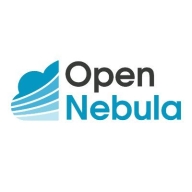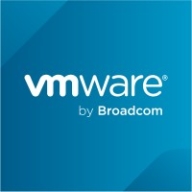

VMWare Tanzu CloudHealth and OpenNebula are prominent competitors in the cloud management platform sector. VMWare Tanzu CloudHealth stands out with a superior position in pricing and support, whereas OpenNebula is known for its versatile features.
Features: VMWare Tanzu CloudHealth offers robust cost management, infrastructure optimization, and multi-cloud visibility. On the other hand, OpenNebula excels with simplicity, powerful orchestration, and extensive compatibility with on-premise and hybrid environments.
Room for Improvement: VMWare Tanzu CloudHealth could improve its initial setup costs and enhance integration capabilities. It would also benefit from expanding its feature set tailored to smaller enterprises. OpenNebula might improve through more comprehensive support services, streamlining advanced feature setup, and enhancing its UI for complex configurations.
Ease of Deployment and Customer Service: VMWare Tanzu CloudHealth facilitates streamlined deployment and offers robust support, which ensures quick time-to-value and detailed customer service for enterprise-level requirements. OpenNebula provides adaptable deployments suited for diverse cloud infrastructures and features community-driven support that is effective for smaller configurations.
Pricing and ROI: VMWare Tanzu CloudHealth may have higher initial setup costs, but these are often offset by better ROI through enhanced cost management. OpenNebula's competitive pricing makes it an attractive choice for specific needs, providing a favorable ROI for organizations utilizing hybrid cloud strategies.
| Product | Market Share (%) |
|---|---|
| OpenNebula | 5.7% |
| VMWare Tanzu CloudHealth | 1.9% |
| Other | 92.4% |


| Company Size | Count |
|---|---|
| Small Business | 7 |
| Midsize Enterprise | 6 |
| Large Enterprise | 3 |
| Company Size | Count |
|---|---|
| Small Business | 4 |
| Midsize Enterprise | 2 |
| Large Enterprise | 4 |
OpenNebula provides the most simple but feature-rich and flexible solution for the comprehensive management of virtualized data centers to enable private, public and hybrid IaaS clouds. OpenNebula interoperability makes cloud an evolution by leveraging existing IT assets, protecting your investments, and avoiding vendor lock-in.
OpenNebula is a turnkey enterprise-ready solution that includes all the features needed to provide an on-premises (private) cloud offering, and to offer public cloud services.
VMware Tanzu CloudHealth, formerly known as VMware Aria Cost Powered by CloudHealth, is a specialized cloud management platform tailored for Multi-Cloud Cost Optimization. It offers comprehensive visibility into cloud spending across various providers, enabling users to identify areas for optimization and make informed resource allocation decisions. With features like reserved instance management, resource rightsizing, and automated cost governance policies, it facilitates financial management for optimal cost efficiency. Beyond cost optimization, Tanzu CloudHealth enhances cloud operations through workload optimization and governance automation, catering to multi-cloud environments encompassing public, private, and hybrid clouds. Its primary focus remains on enabling organizations to effectively manage and reduce cloud expenditures while supporting operations across diverse cloud platforms.
We monitor all Cloud Management reviews to prevent fraudulent reviews and keep review quality high. We do not post reviews by company employees or direct competitors. We validate each review for authenticity via cross-reference with LinkedIn, and personal follow-up with the reviewer when necessary.